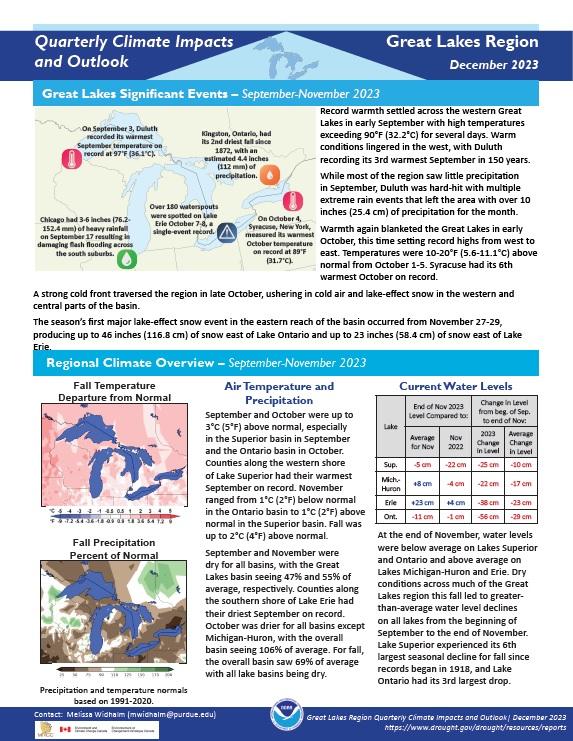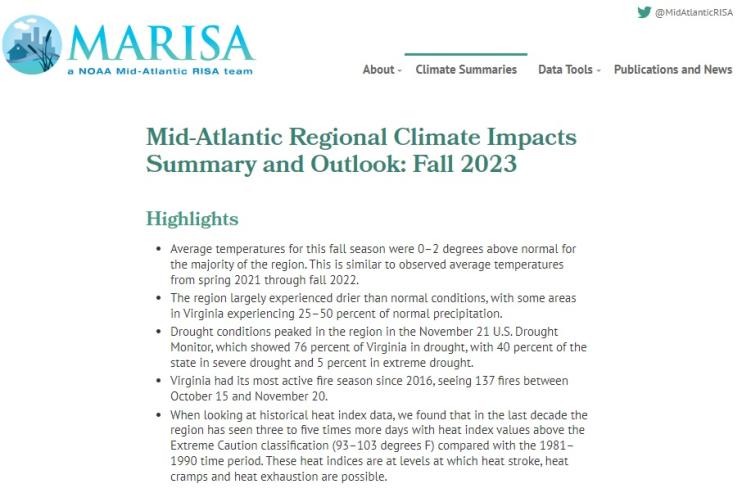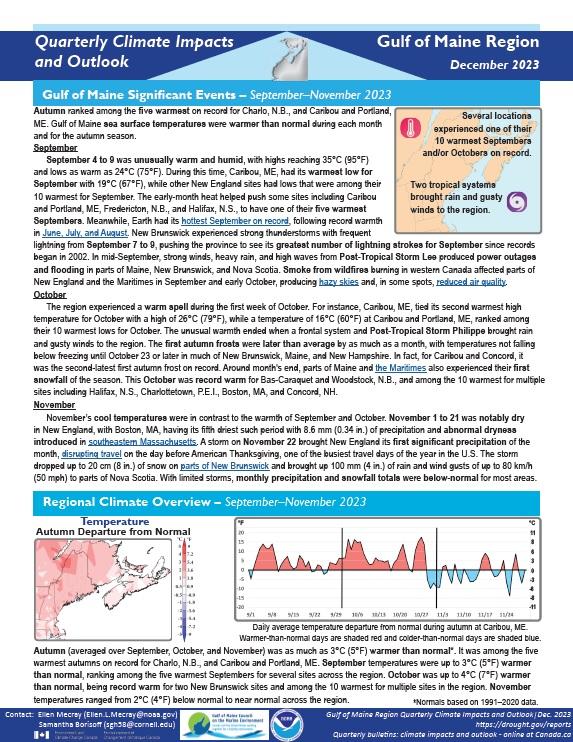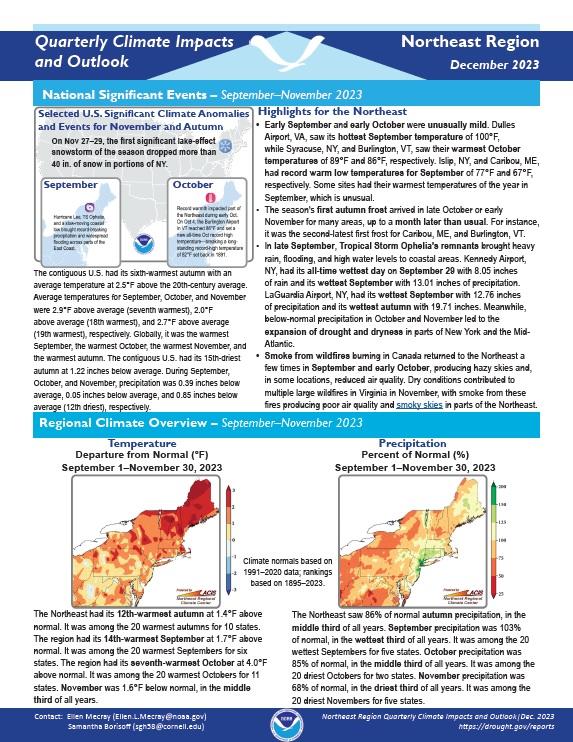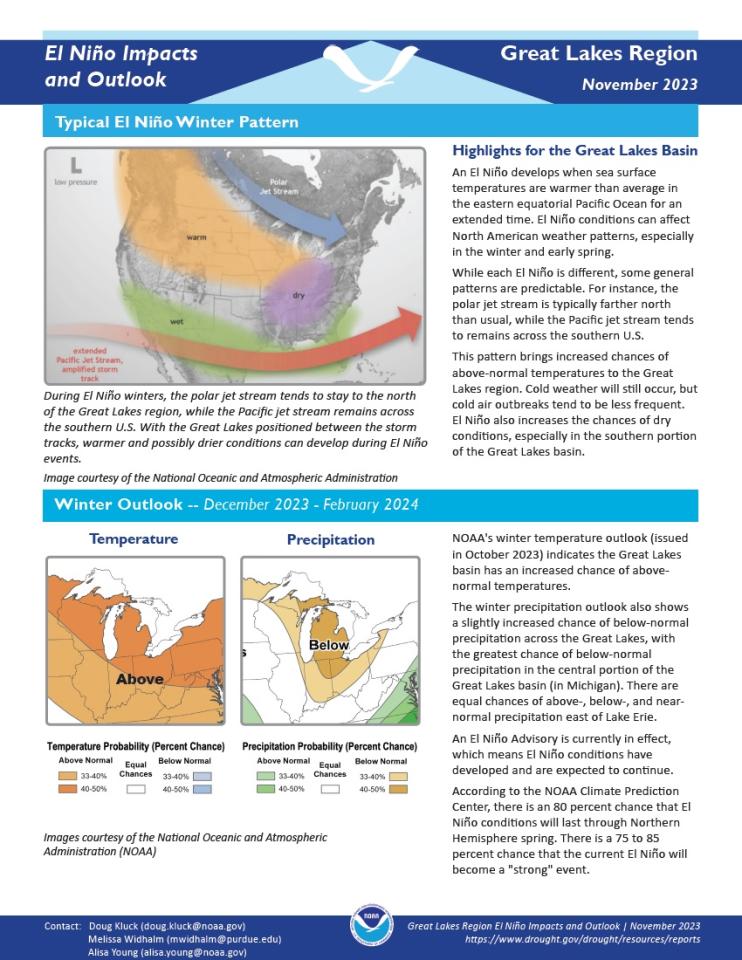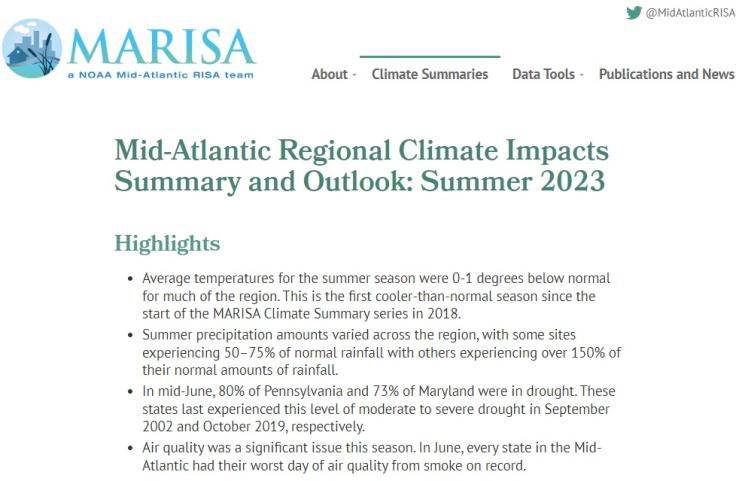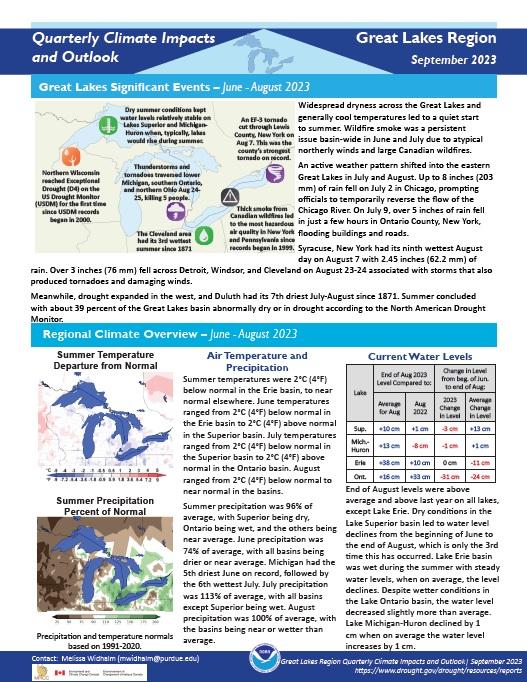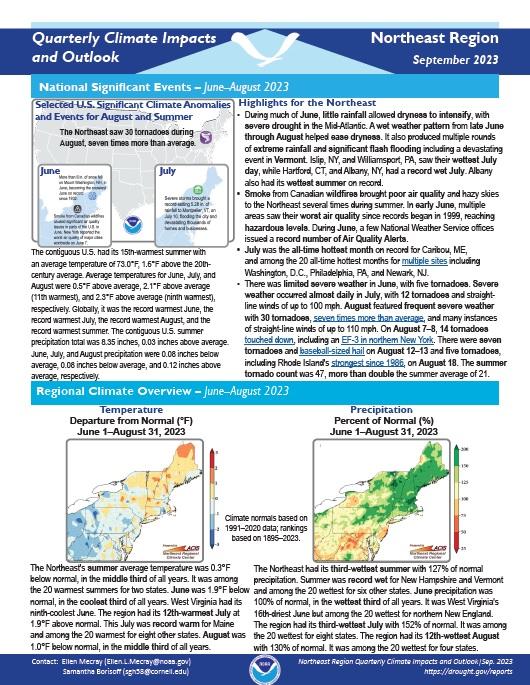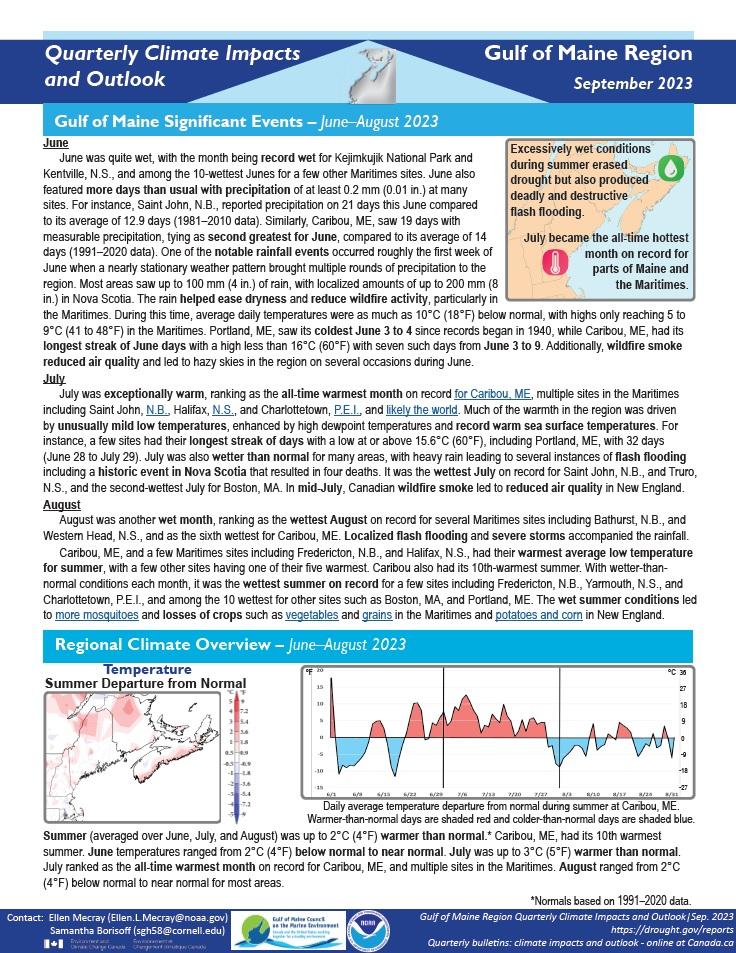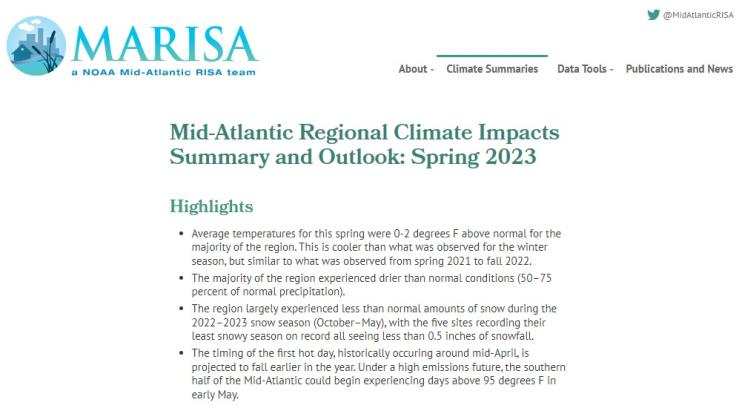Quarterly Climate Impacts and Outlook for the Great Lakes Region for September–November 2023. Dated December 2023.
Fall temperatures in the region were up to 2°C (4°F) above normal. The overall basin saw 69% of average precipitation with all lake basins being dry.
Quarterly Climate Impacts and Outlook for the Mid-Atlantic Region for September–November 2023. Dated December 2023.
Average temperatures for this fall season were 0–2 degrees above normal for the majority of the region. This is similar to observed average temperatures from spring 2021 through fall 2022. The region largely experienced drier than normal conditions, with some areas in Virginia experiencing 25%–50% of normal precipitation.
Quarterly Climate Impacts and Outlook for the Gulf of Maine Region for September–November 2023. Dated December 2023.
Autumn (averaged over September, October, and November) was as much as 3°C (5°F) warmer than normal. It was among the five warmest autumns on record for Charlo, New Brunswick, and Caribou and Portland, Maine. Precipitation for autumn (accumulated from September to November) ranged from 50% of normal to 125% of normal.
Quarterly Climate Impacts and Outlook for the Northeast Region for September–November 2023. Dated December 2023.
The Northeast had its 12th-warmest autumn at 1.4°F above normal. It was among the 20 warmest autumns for 10 states. The Northeast saw 86% of normal autumn precipitation, in the middle third of all years.
This handout provides information on the typical El Niño winter pattern; the El Niño outlook; potential winter and spring impacts; and comparisons of conditions during previous El Niño years for the Great Lakes region. Updated November 2023.
NOAA’s Regional Climate Services Program created these Outlooks to inform the public about climate impacts within their respective regions. Each regional report contains easy-to-understand language, and anyone can access them through the U.S. Drought Portal.
Quarterly Climate Impacts and Outlook for the Mid-Atlantic Region for June–August 2023. Dated September 2023.
Average temperatures for the summer season were 0–1 degrees below normal for much of the region. This is the first cooler-than-normal season since the start of the MARISA Climate Summary series in 2018. Summer precipitation amounts varied across the region, with some sites experiencing 50%–75% of normal rainfall with others experiencing over 150% of their normal amounts of rainfall.
Quarterly Climate Impacts and Outlook for the Great Lakes Region for June–August 2023. Dated September 2023.
Summer temperatures were 2°C (4°F) below normal in the Erie basin, to near normal elsewhere. Summer precipitation was 96% of average, with Superior dry, Ontario wet, and the others near average.
Quarterly Climate Impacts and Outlook for the Northeast Region for June–August 2023. Dated September 2023.
The Northeast's summer average temperature was 0.3°F below normal, in the middle third of all years. It was among the 20 warmest summers for two states. The Northeast had its third-wettest summer with 127% of normal precipitation. Summer was record wet for New Hampshire and Vermont and among the 20 wettest for six other states.
Quarterly Climate Impacts and Outlook for the Gulf of Maine Region for June–August 2023. Dated September 2023.
Summer was up to 2°C (4°F) warmer than normal. Precipitation for the summer season ranged from near normal to more than 200% of normal. It was the wettest summer on record for several Maritimes sites and among the 10 wettest for a few other sites in the region.
Quarterly Climate Impacts and Outlook for the Mid-Atlantic Region for March–May 2023. Dated June 2023.
Average temperatures for this spring were 0–2 degrees F above normal for the majority of the region. This is cooler than what was observed for the winter season, but similar to what was observed from spring 2021 to fall 2022. The majority of the region experienced drier than normal conditions (50%–75% of normal precipitation).


